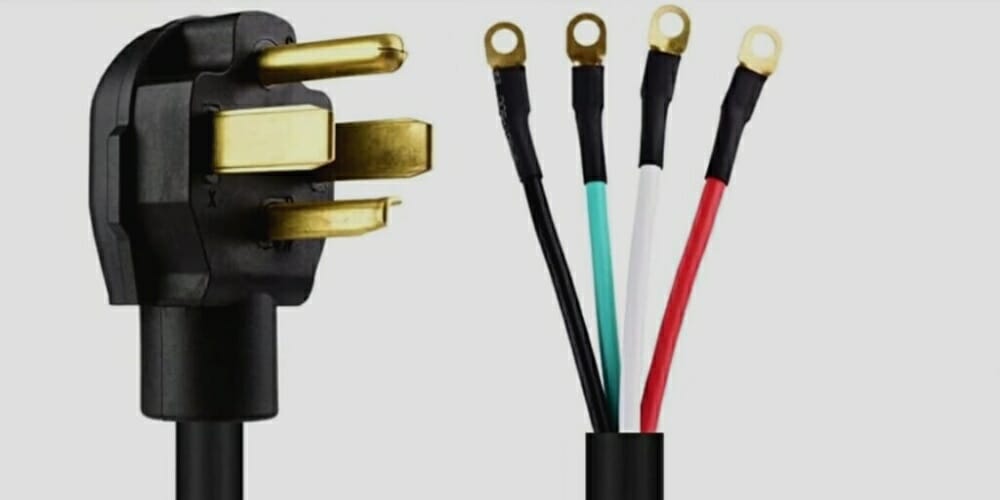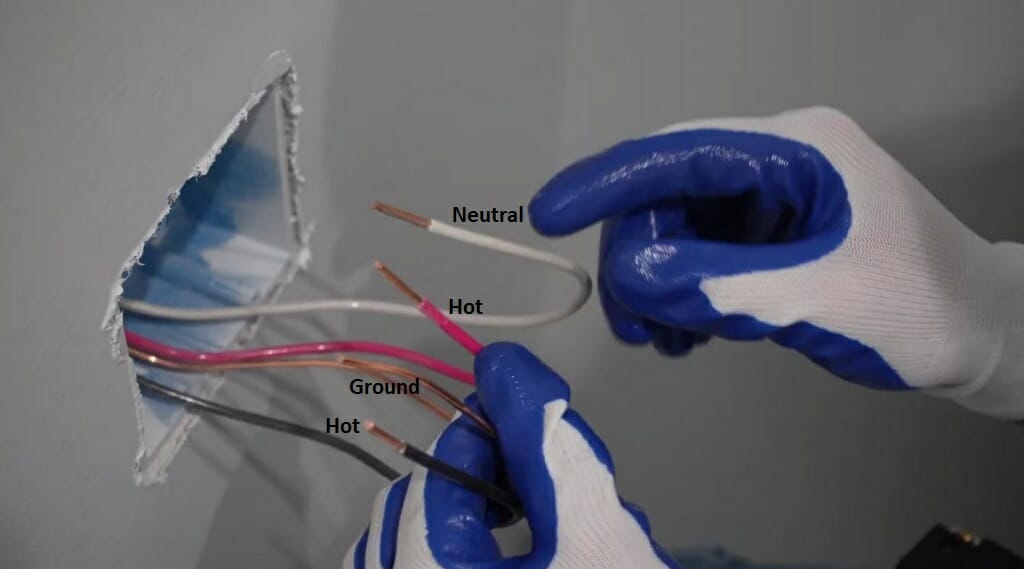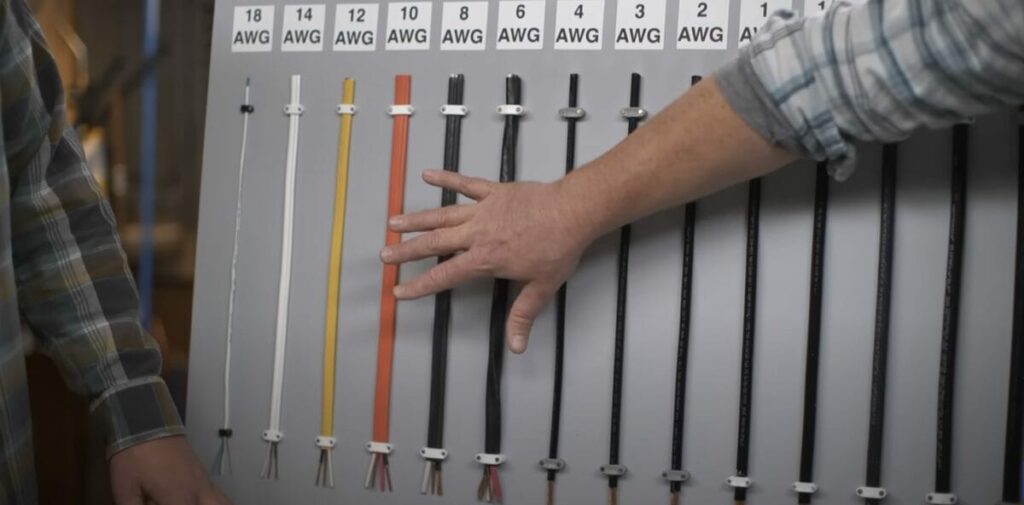What is 10/3 Wire Used For? (Guide)

Hey there, DIY enthusiasts and curious minds! I’m excited to dive into the world of electrical wiring with you today, focusing on one of the unsung heroes of the electrical world – the 10/3 wire.
So, what’s the big deal about 10/3 wire? It’s the backbone for powering up some of the essential appliances in your home. Whether installing a new air conditioner to beat the summer heat, setting up a fancy new kitchen range, or ensuring your clothes dryer is up and running, 10/3 wire is often your go-to choice.
In this guide, I’ll walk you through what 10/3 wire is, its prime uses, and some pro tips and tricks I’ve picked up along the way. By the end, you’ll know what 10/3 wire is used for and how to use it safely and effectively in your home projects. So, grab your tools, and let’s get wired up!
Must-Know Things About The 10/3 Gauge Wire

First, 10/3 wire is like the strong, silent type in the wired world. It’s got three conducting wires and a solid ground wire, all with a 10 gauge thickness.
It’s your go-to for 220V, 30 amp outlets – perfect for power-hungry appliances like your dryer or air conditioner.

Here’s a simple rule: one 30 amp circuit, one 30 amp outlet. The 10/3 wire is not for playing musical chairs with multiple outlets. It’s all about safety and keeping to the National Electrical Code. For 20 amp circuits, you can go with up to ten 1.5 amp outlets – more flexibility there.
In all my years of building and renovating, I’ve learned that the right wire makes all the difference. Whether it’s ensuring your dryer doesn’t trip your breaker or keeping your outdoor wiring safe, choosing the right wire and installing it correctly is key. And remember, if you’re ever in doubt, there’s no harm in calling in a pro. Safety first, always!
Navigating the World of Electrical Wires: A Personal Guide to Choosing the Right Wire
Let’s dive into the exciting world of electrical wires! I’ve been around these often, and picking the right wire makes all the difference.
Here’s a comparison between 10/3 wire and its cousins, 12/2 and 14/2, to help you make the best choice for your project.
| Feature | 10/3 Wire | 12/2 Wire | 14/2 Wire |
|---|---|---|---|
| Wire Gauge | 10 gauge – thicker, more robust | 12 gauge – medium thickness | 14 gauge – thinner, more flexible |
| Number of Conductors | 4 (including ground) | 3 (including ground) | 3 (including ground) |
| Typical Uses | Heavy-duty appliances like dryers, ranges | Moderate load circuits like kitchen outlets | Light load circuits like lighting fixtures |
| Amperage Rating | Up to 30 amps | Up to 20 amps | Up to 15 amps |
| Voltage Suitability | Ideal for 220V circuits | Commonly used for 120V circuits | Typically used for 120V circuits |
| Installation Scenarios | Perfect for high-power needs; I used this for a heavy-duty workshop air conditioner | Great for kitchen and bathroom outlets; I’ve used this in many kitchen remodels | Best for indoor lighting circuits; used this for bedroom and living room lights |
| Flexibility | Less flexible due to thickness | Moderately flexible | Most flexible, easy-to-handle |
| Safety Tips | Ensure proper grounding; it is heavier and requires careful handling | Perfect balance between power and ease of use | Ideal for low-power applications; ensure it’s not overloaded |
Remember, the thicker the wire (lower gauge number), the more power it can handle. But it’s not just about power – about the right fit for your needs. Projects go smoothly when the right wire is chosen and complications when not. So, match the wire to your project’s requirements, and you’re all set for success!
Keeping Your 10/3 Wire in Top Shape: Maintenance and Longevity Tips
Here are some tips I’ve picked up that’ll help you ensure the longevity and reliability of your 10/3 wire installations.
- Regular Inspections: Just like checking in on an old friend, make it a habit to inspect your 10/3 wire installations periodically. Look out for any signs of wear and tear, especially in areas where the wire is exposed. If you spot any damage, like frayed wires or loose connections, it’s time for some attention.
- Avoid Overloading: One key thing I’ve learned is that wires have their limits. Overloading circuits is a no-go. Ensure your 10/3 wire isn’t carrying more load than it’s rated for. This not only prevents safety hazards but also extends the life of your wiring.
- Proper Installation: I can’t stress this enough – a well-done installation is half the battle won. Ensure your 10/3 wire is installed correctly, with secure connections and appropriate insulation. A sloppy job might work in the short term, but it’s a recipe for trouble.
- Keep It Clean and Dry: Moisture and dirt are enemies of electrical wiring. If you have outdoor or exposed wiring, ensure it’s protected from the elements. I’ve seen how moisture can penetrate and cause corrosion or short circuits. Regularly clean any dirt or debris to prevent buildup.
- Mind the Environment: Extreme temperatures and harsh conditions can affect wire integrity. If your 10/3 wire runs through areas with high heat or potential for physical damage, consider adding extra protection like conduit or insulation sleeves.
- Stay Updated on Codes and Regulations: Electrical codes aren’t just bureaucratic red tape; they are for safety and efficiency. Keeping up-to-date with these can mean you always follow the best practices for maintaining your wiring.
- Professional Check-ups: Sometimes, you need to call in the pros. Having a licensed electrician inspect your wiring can uncover potential issues you might miss. They can also provide expert advice tailored to your specific setup.
A little effort in maintaining your 10/3 wire can save you a lot of hassle and expense in the long run. Remember these tips, and your wiring will thank you for it!
Frequently Asked Questions
- Is Installing 10/3 Wire a DIY Project?
- While it’s doable, safety comes first! If you’re not experienced in electrical work, calling in a professional is wise. Working with electrical wiring requires know-how and caution. But if you’re up for it, always turn off the power and follow the safety guidelines.
- What’s the Difference Between 10/3 and 10/2 Wire?
- Here’s the deal: 10/3 wire has four wires (two hot wires, a neutral, and a ground), whereas 10/2 has only three (a hot wire, a neutral, and a ground). The extra hot wire in the 10/3 cable allows for running 220V appliances, giving it a broader application range.
- Can I Use 10/3 Wire for Outdoor or Underground Projects?
- You can, but ensure you get the UF (underground feeder) rated 10/3 wire. It’s designed to withstand the elements. And don’t forget to follow local codes for burying wires – safety and compliance are crucial!
- How Long Can 10/3 Wire Run Without Voltage Drop?
- For a 120V circuit, you can run up to 50 feet, and for a 240V circuit, up to 100 feet. Exceeding these distances might result in voltage drops, affecting performance.
- Is There a Limit to How Many Outlets I Can Connect to a 10/3 Wire?
- Yes, the National Electrical Code typically recommends a single outlet for a 30 amp circuit like the one you’d use with 10/3 wire. It’s all about matching the outlet capacity with the circuit’s power.
References
Organizations:
- Home Builders Institute. https://hbi.org/
- Mountain Plains Learning Experience Guide. https://eric.ed.gov/?id=ED197158
Books:
- The Complete Guide to Electrical Wiring by EEP. https://www.scribd.com/doc/147744020/The-Complete-Guide-to-Wiring-5th-Edition
Website Resources:
Video References:
The Excellent Laborer
This Old House
